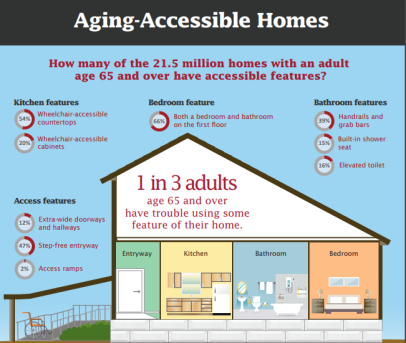Aging in Place Requires Long-Term Care Planning
As Americans age, many begin weighing whether to move to a more manageable space or stay in the homes they know and love. In most cases, the decision comes down to two things: safety and freedom. But there's one critical reality often overlooked: Aging in place only works when supported by a well-thought-out Long-Term Care (LTC) Plan. Long-Term Care (LTC) refers to the support needed when one can no longer perform some or all of the Activities of Daily Living (ADLs) or is living with a cognitive impairment. With the Silver Tsunami approaching, millions are heading into retirement just as the healthcare system faces unprecedented strain. Unsurprisingly, aging in place has become such a powerful and popular idea.
Aging in Place vs. Aging in the Right Place
According to AARP, most Americans want to remain in their homes for as long as possible. However, without proper planning, aging in place often turns into aging in crisis, a reactive situation where safety, autonomy, and family finances are compromised. That's why the real goal should be to age in the right place, one that's safe, comfortable, sustainable, and ready to meet your evolving needs, including:
- Downsizing to a one-level home or condo
- Renovating for accessibility (grab bars, wider doorways, walk-in showers)
- Moving closer to loved ones or essential services
- Planning for professional in-home care or care coordination
Downsizing Should Be Liberating
Downsizing is often misunderstood as giving up memories or settling for less, but it's really about creating a space that reflects a more refined lifestyle. As people enter retirement, a simpler, more accessible home can reduce maintenance in the short term, and over time, it can also lower fall risk, caregiver burden, and financial strain. Making a move today can offer more freedom, peace of mind, and control in the years to come. But even the perfect home won't help if there isn't a plan to handle extended care needs when they arise.
Why Long-Term Care Planning Is Essential to Aging in Place
While most Americans want to receive care at home when needed, the problem is that wanting it may be wishful thinking:
- Medicare, Medicare Supplements, and health insurance don't cover Long-Term Care.
- Caregiving is physically and emotionally demanding, and often unsustainable for a family alone.
- Home care costs can run $5,000–$10,000 per month, depending on the level of care.
Long-Term Care Planning – especially when insurance-based – provides greater certainty for aging in place because it answers three essential questions:
- Where do you want to receive care?
- Who will provide or coordinate that care?
- How will you pay for it, without burdening loved ones or depleting assets?
Furthermore, the worst time to make decisions about Long-Term Care and aging in place is during a crisis, making proactive planning even more appealing to:
- Stay independent longer
- Avoid burdening your family with tough decisions
- Preserve assets and access higher-quality care
- Ensure that aging in place remains an option, not a hope
The Long-Term Care component should be a consideration for anyone considering downsizing, modifying a home, or simply planning for retirement. Aging in place requires a floor plan AND a care plan, so start having those conversations now while the choices can still be made.
20250422

